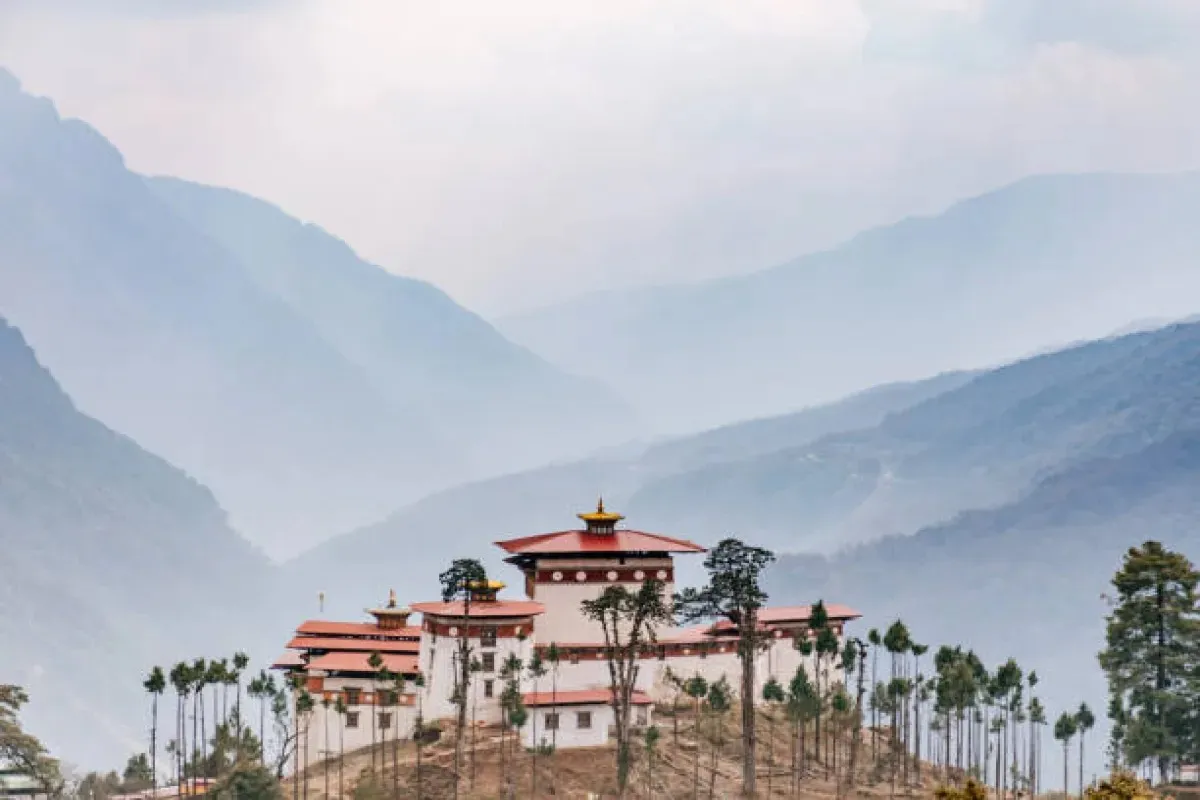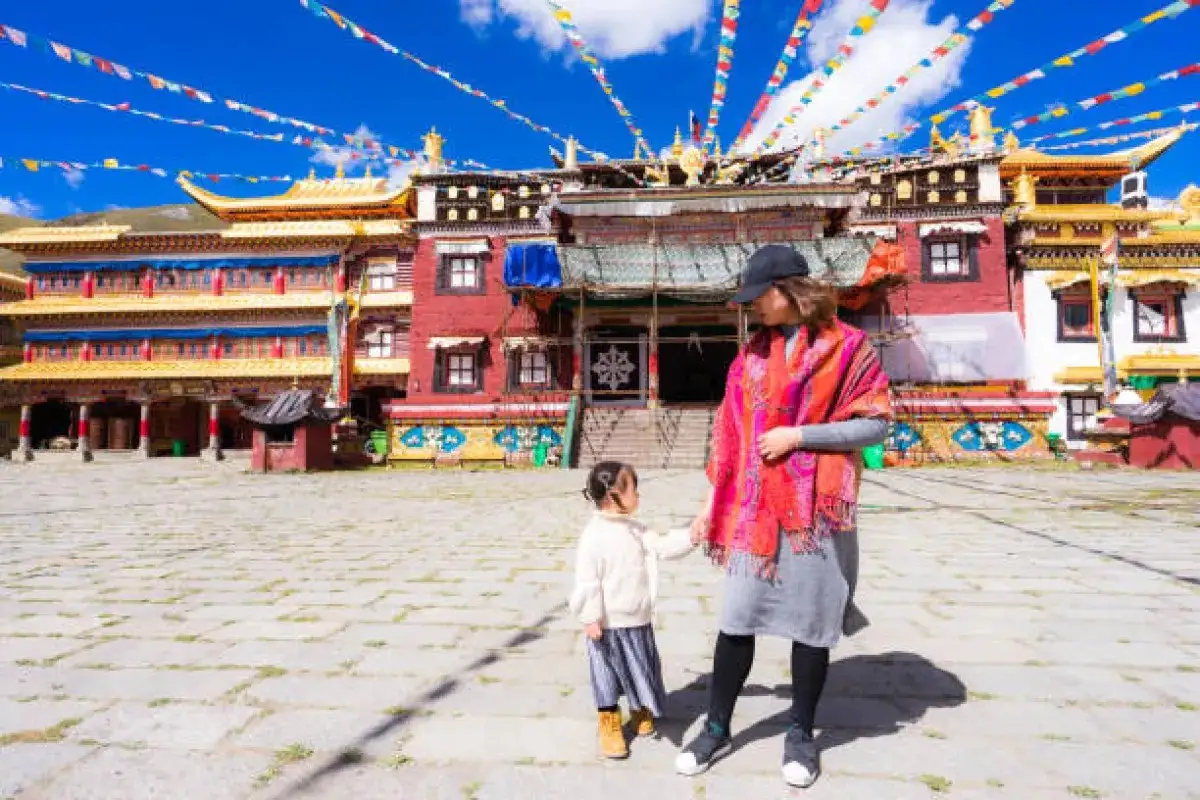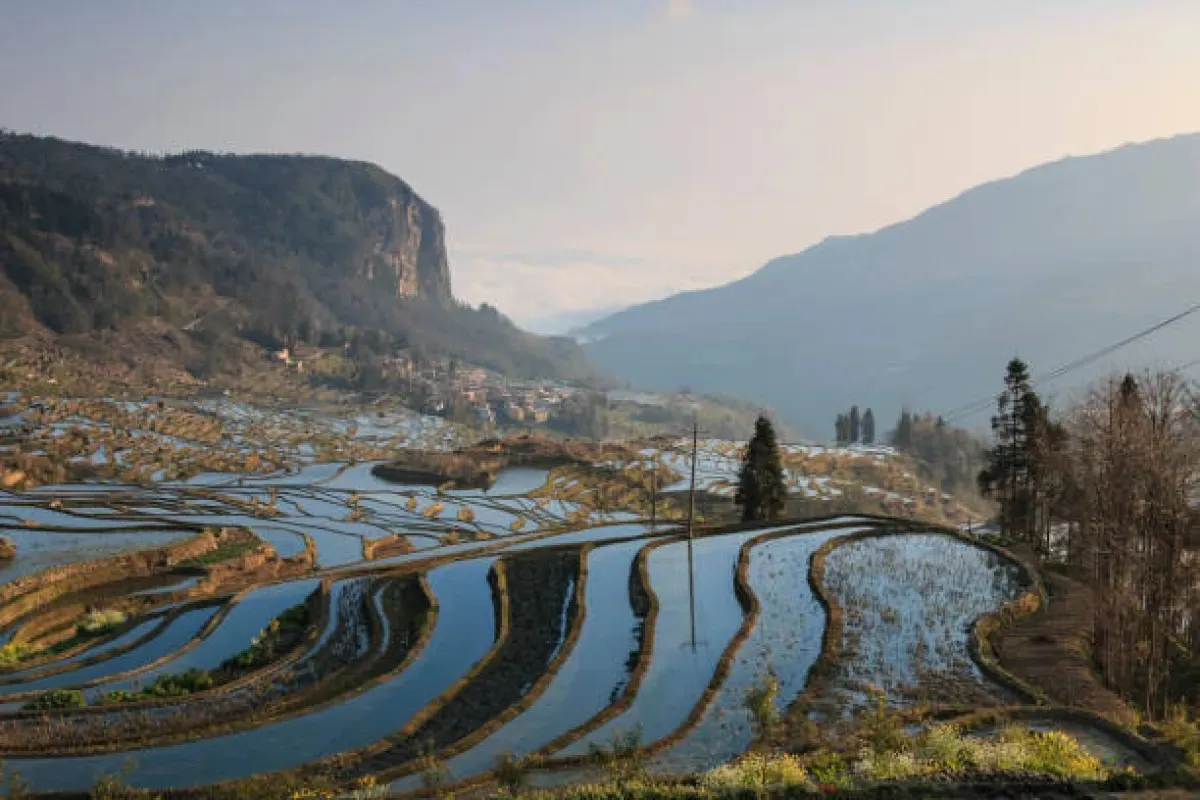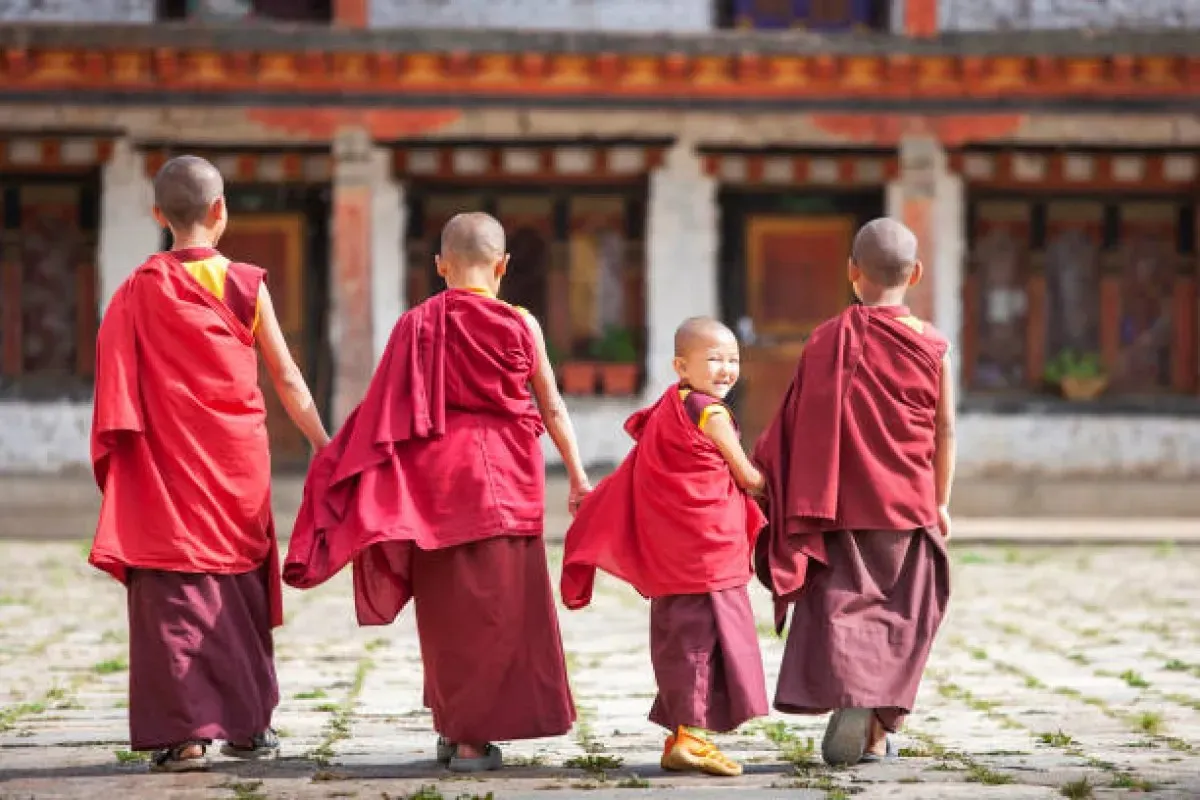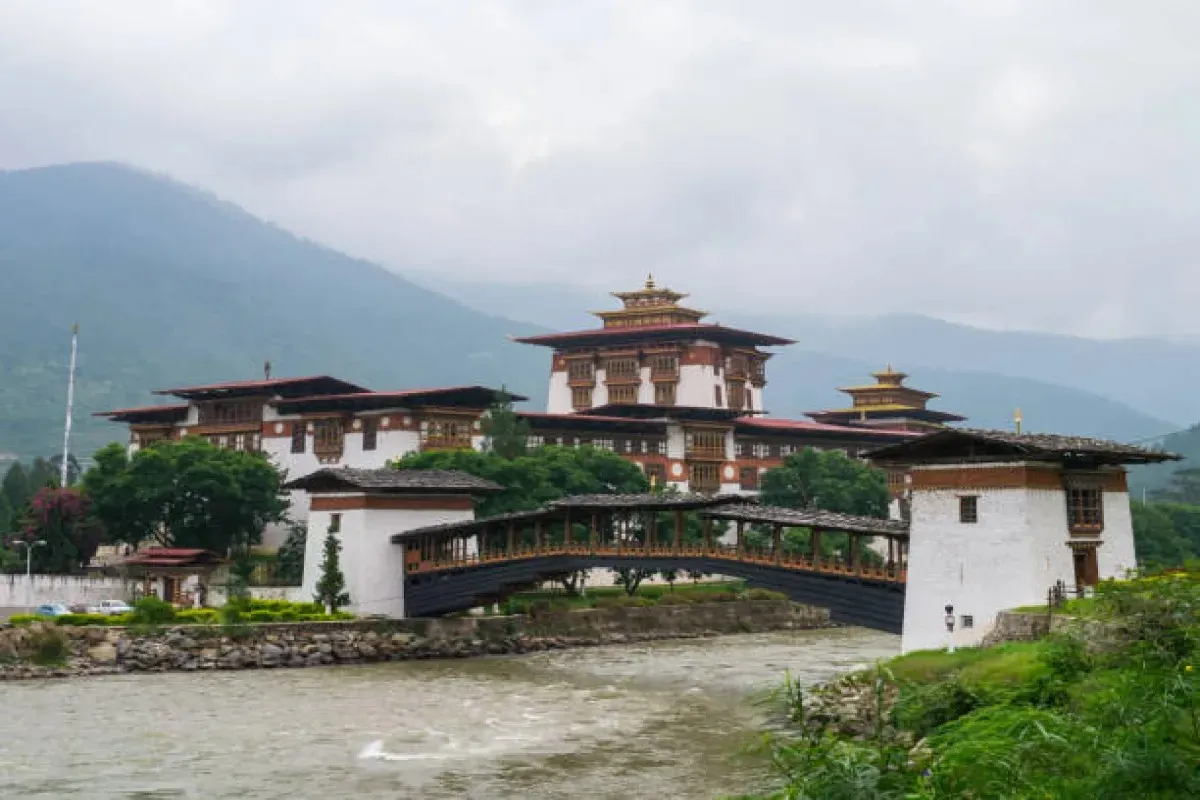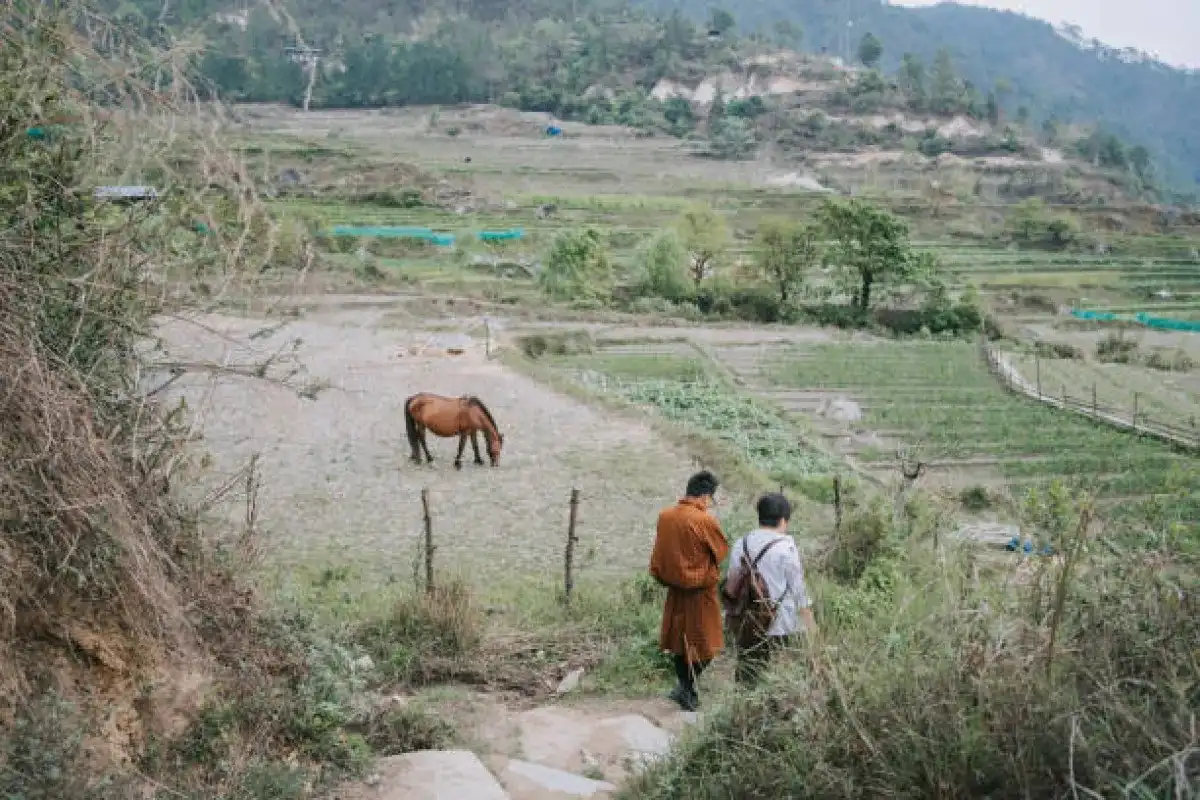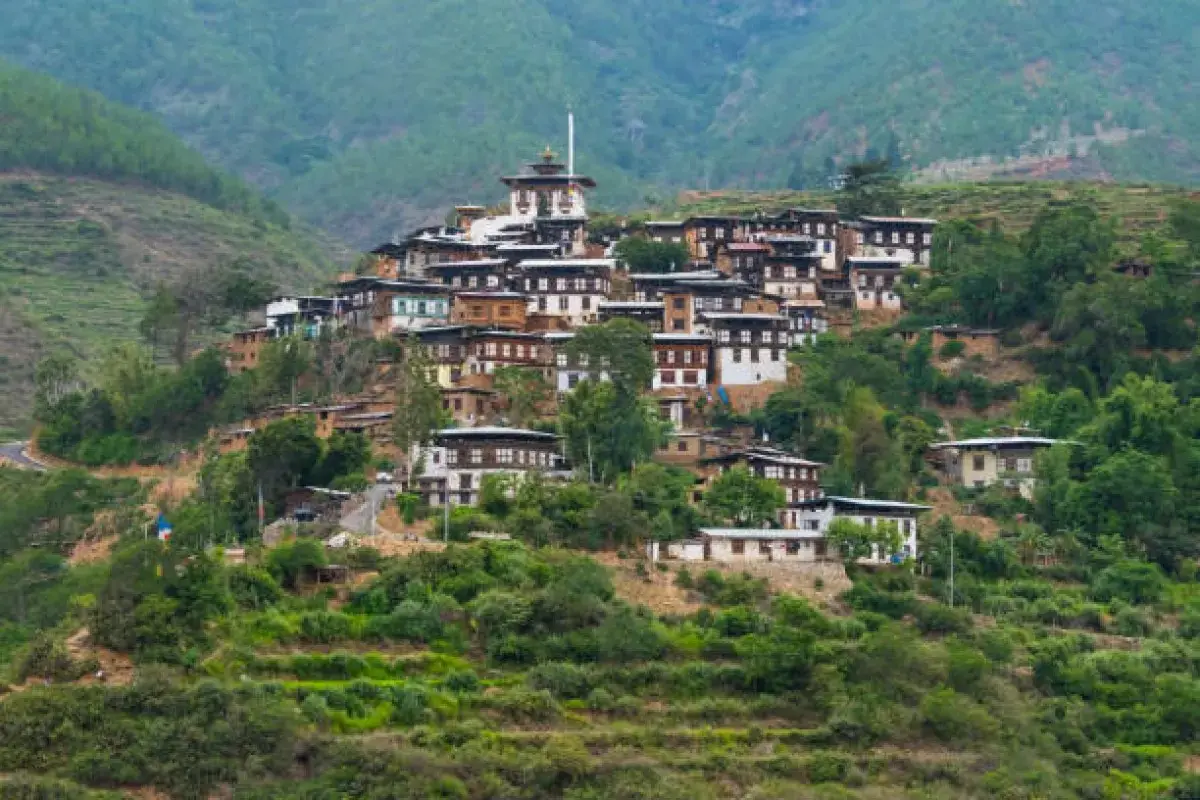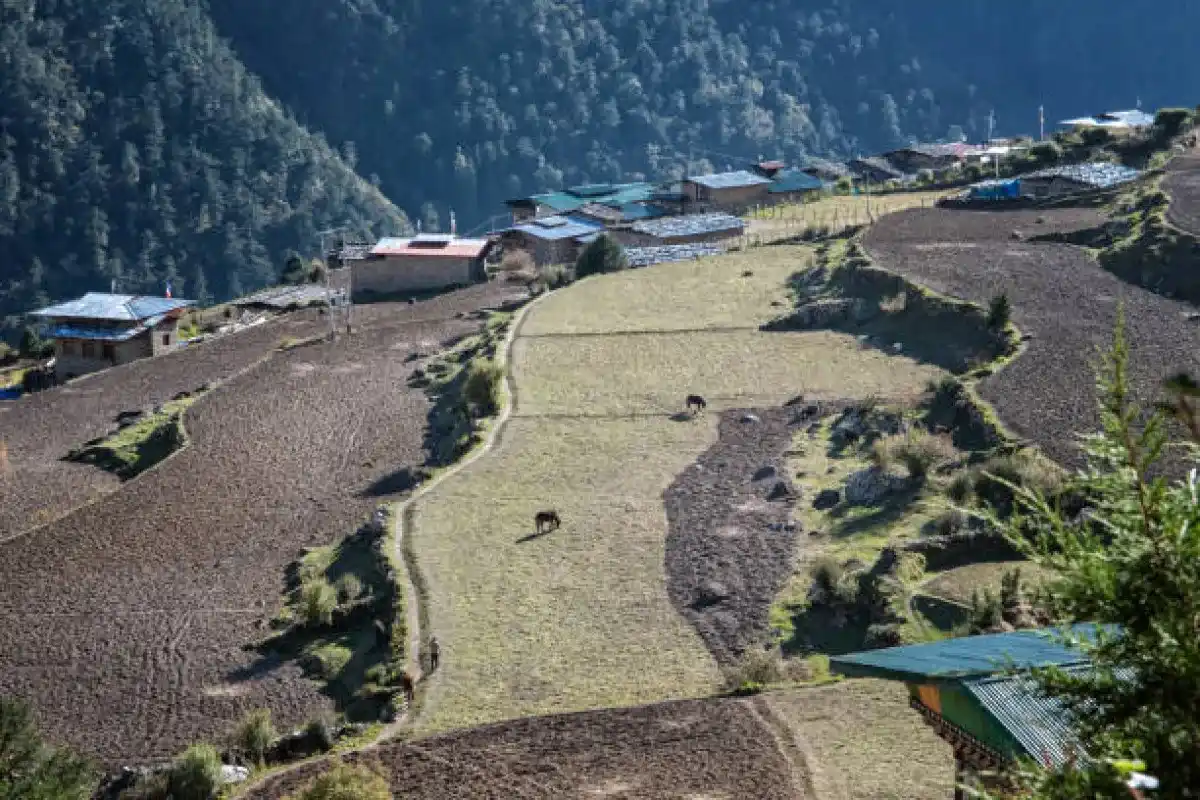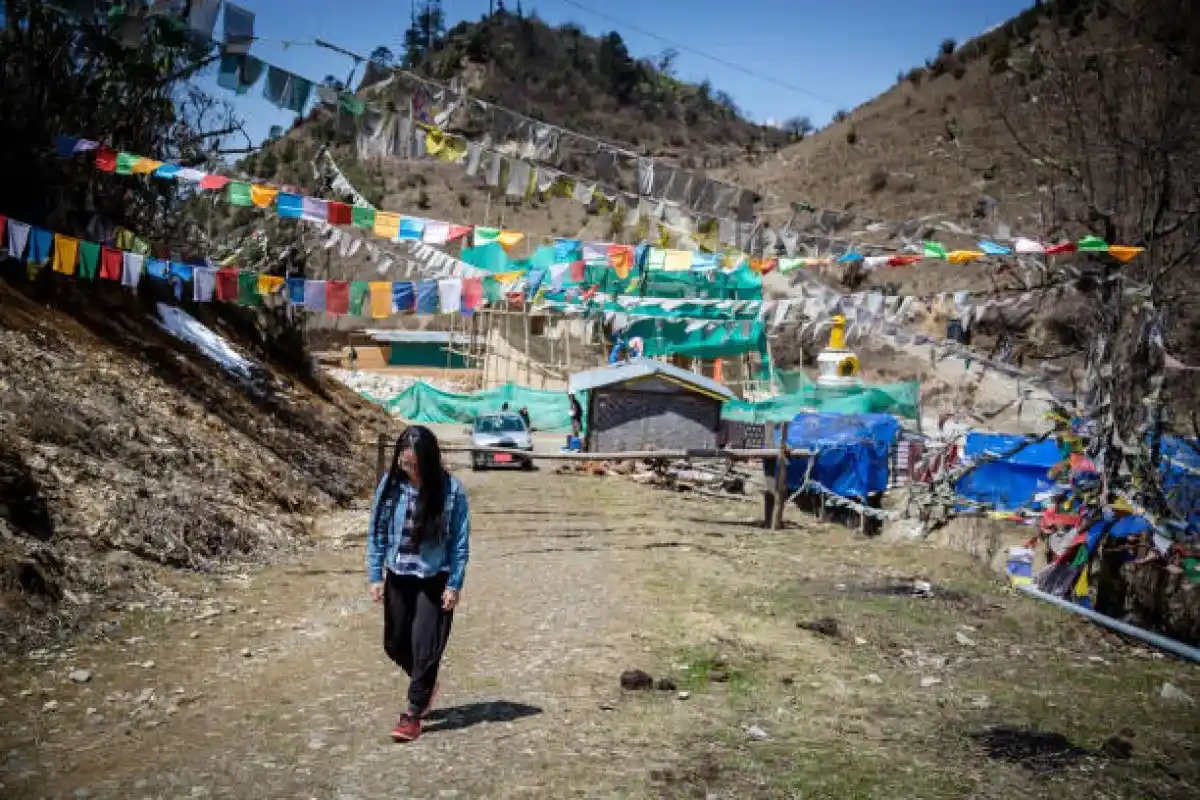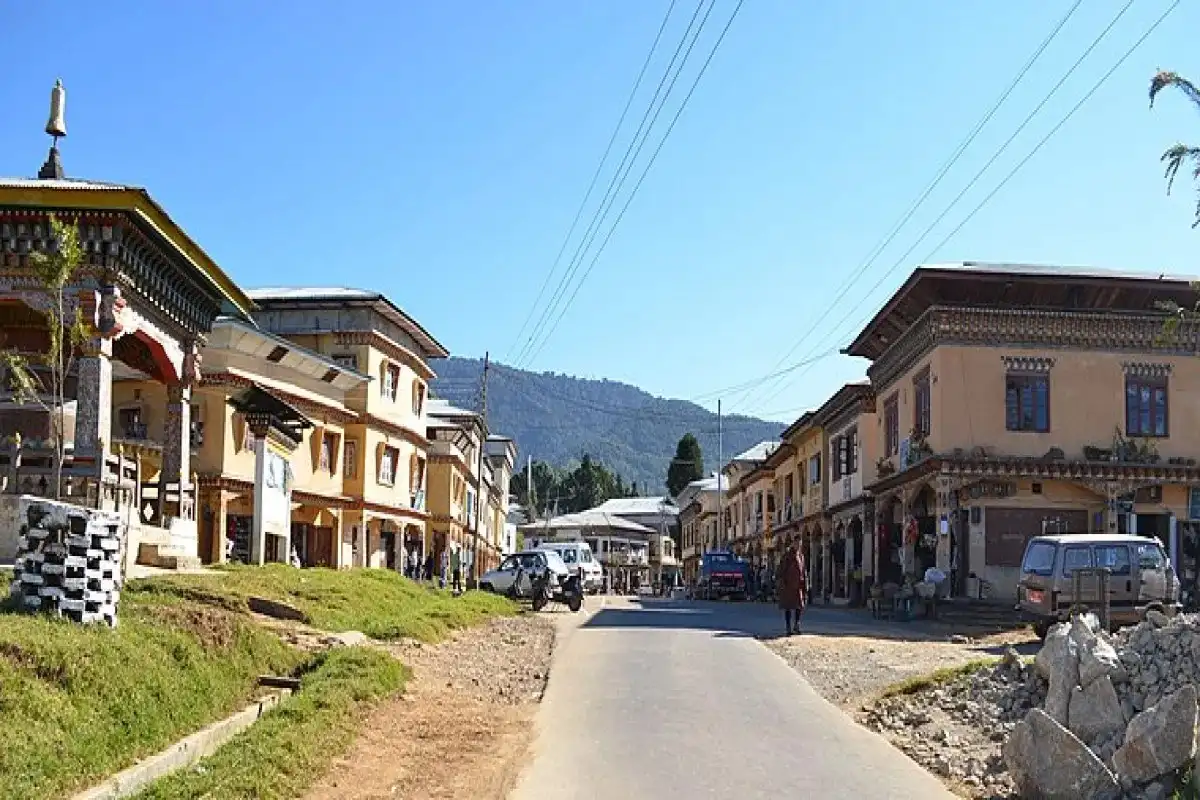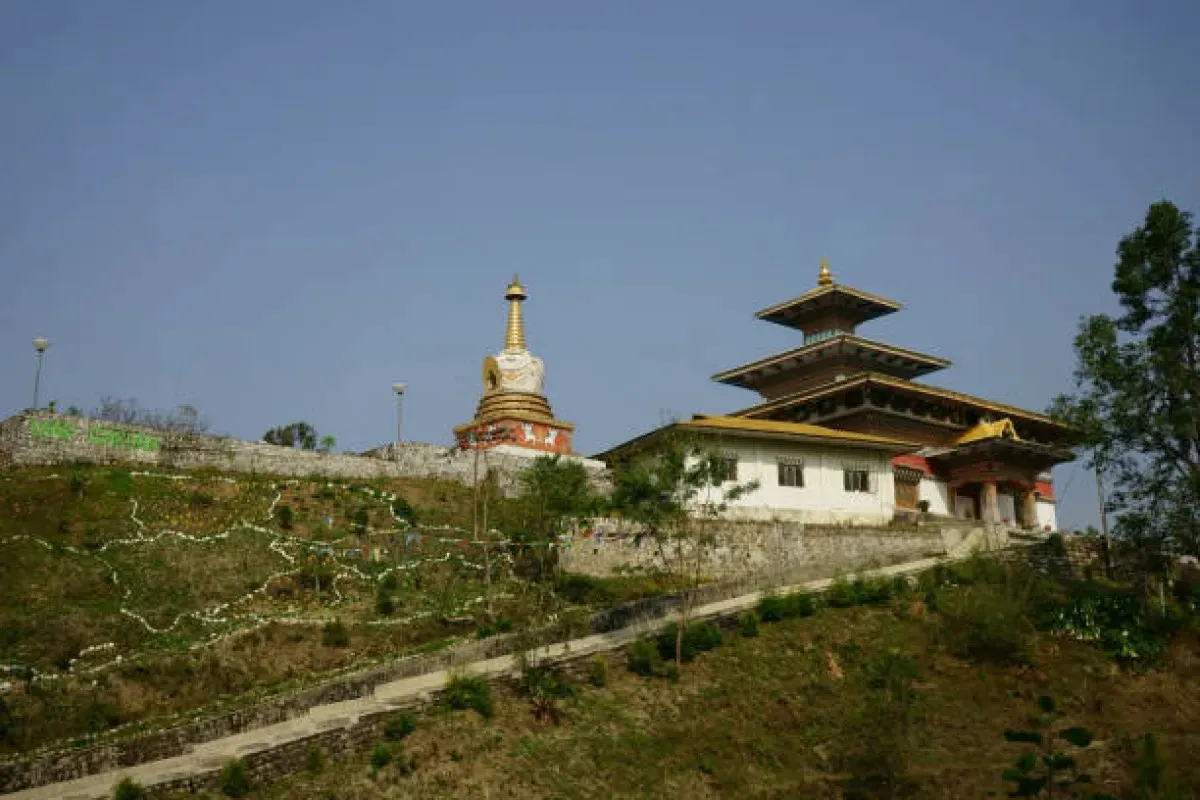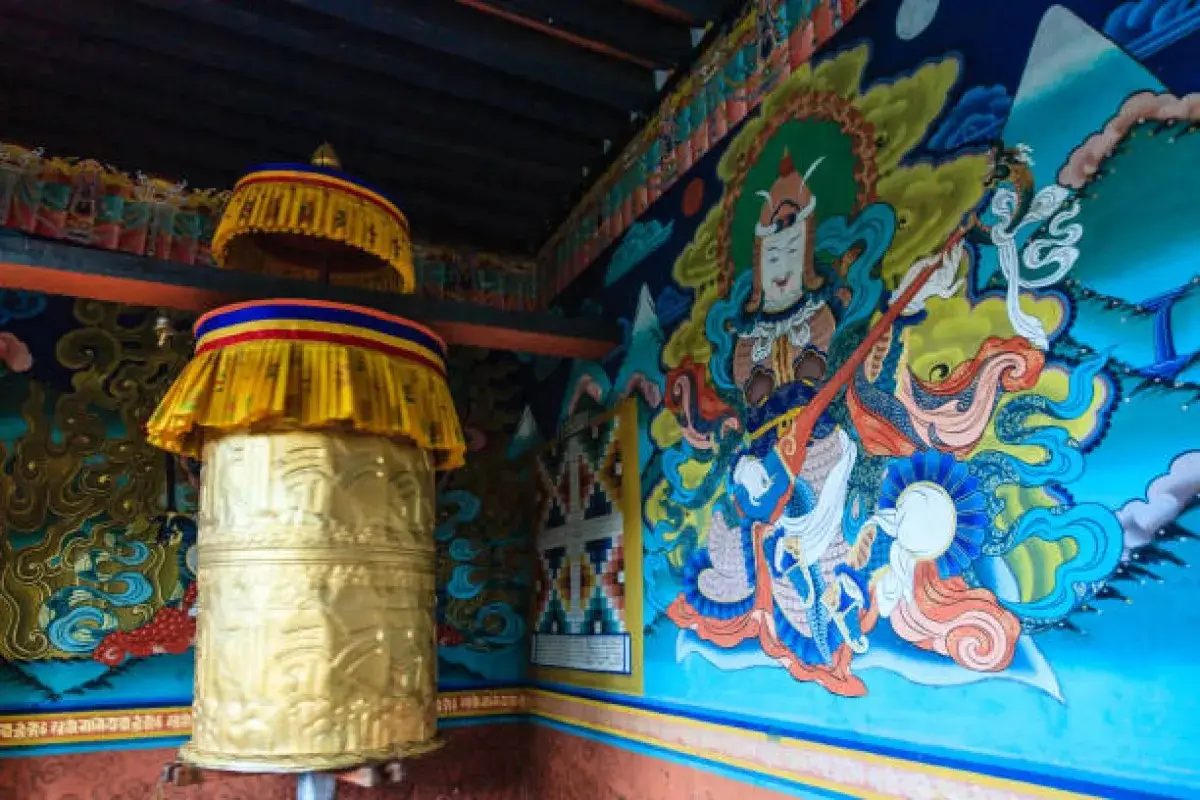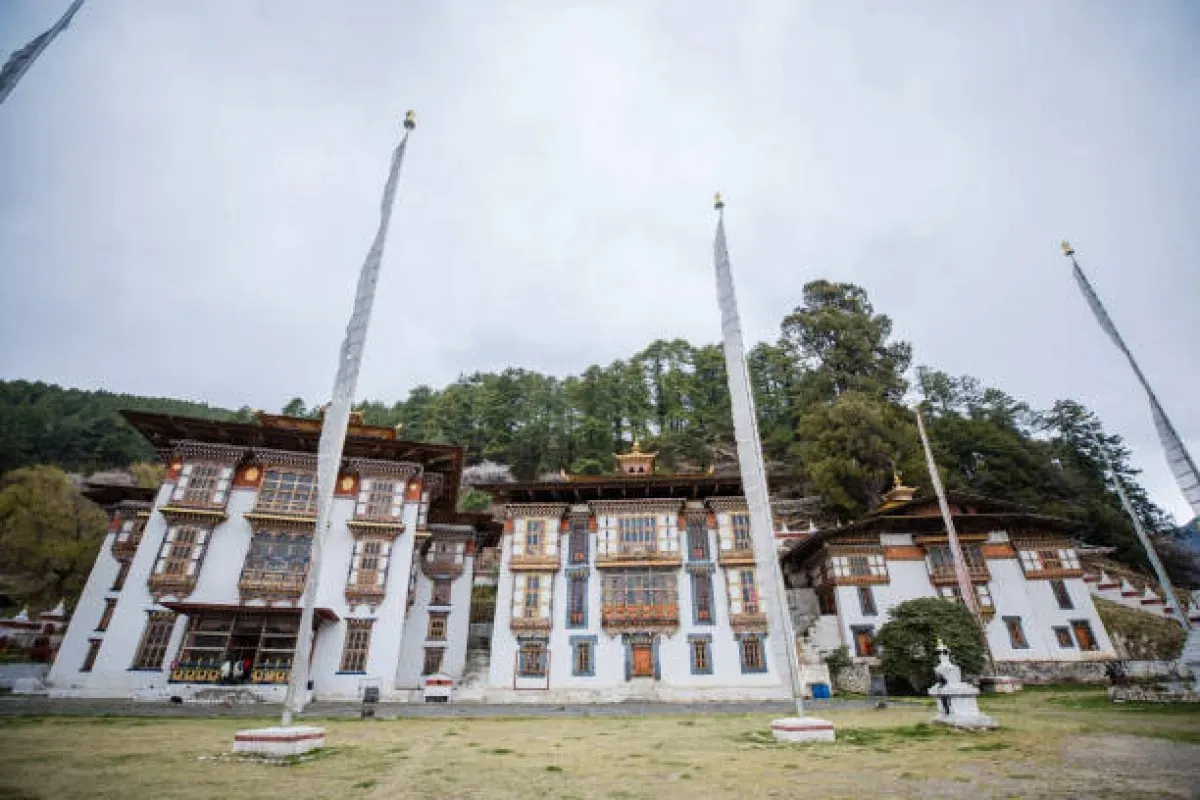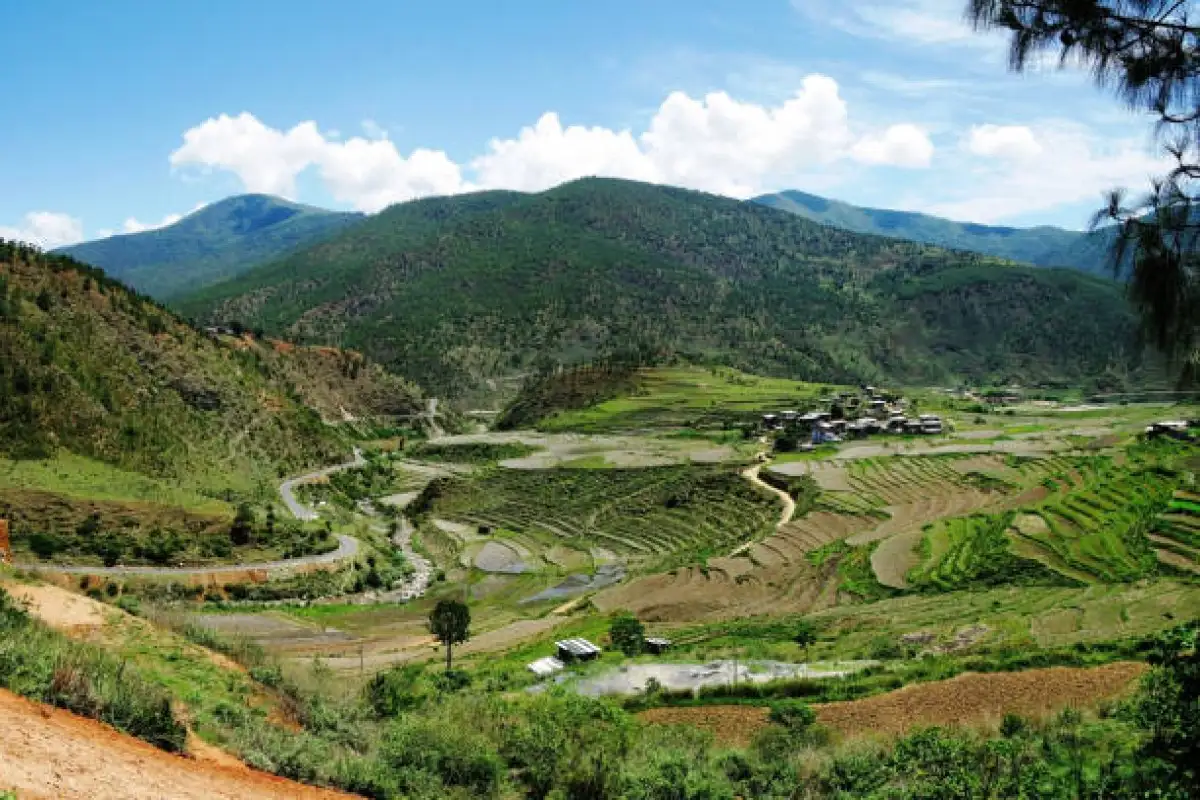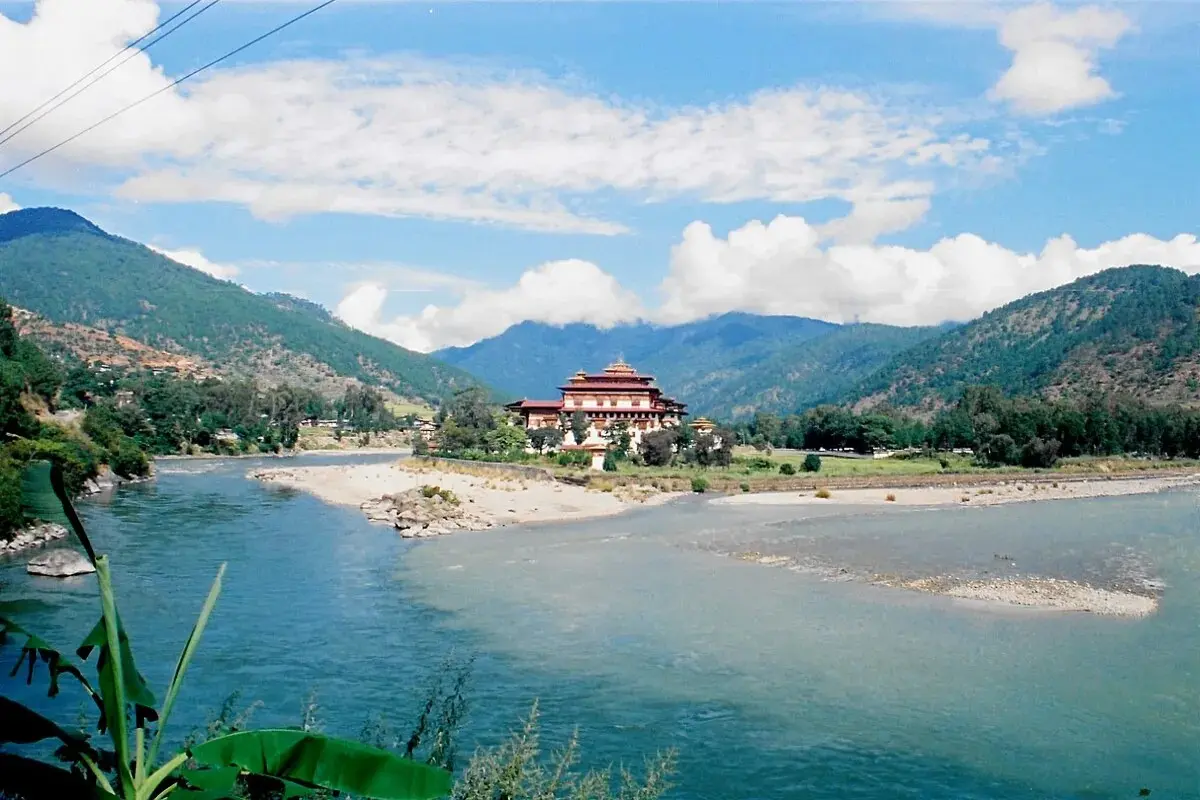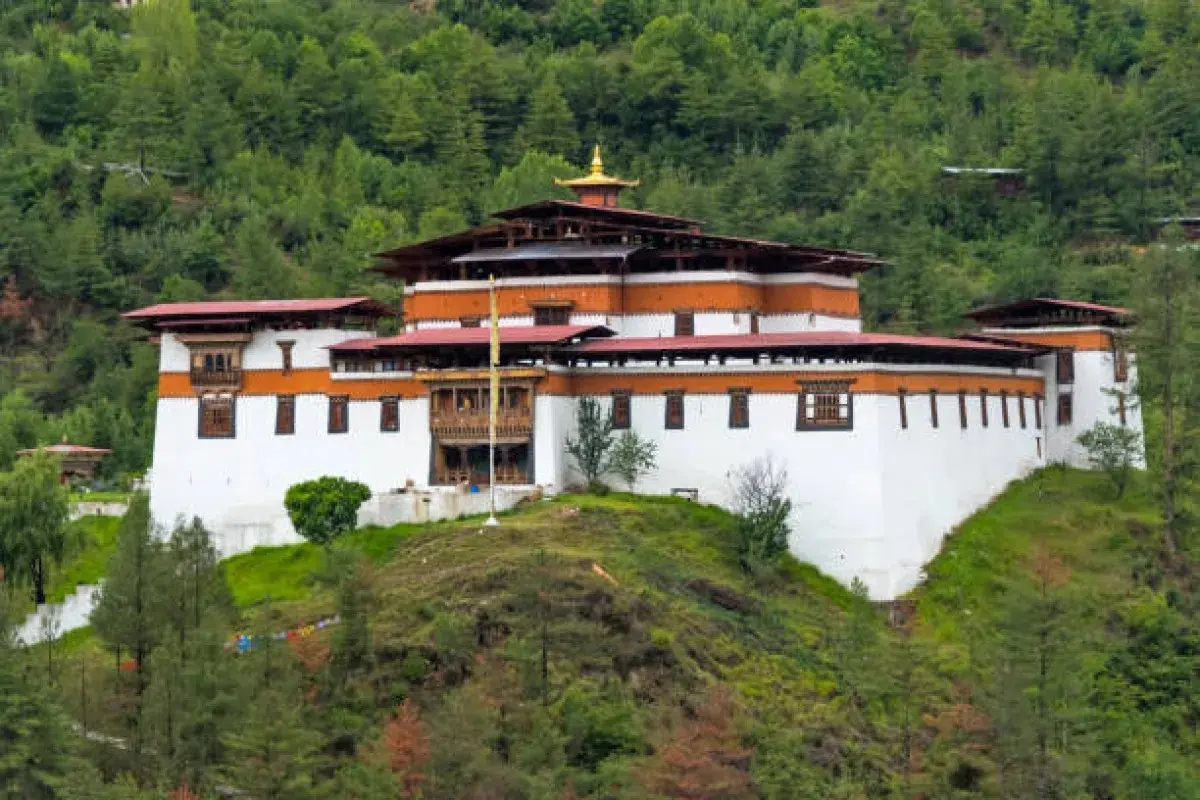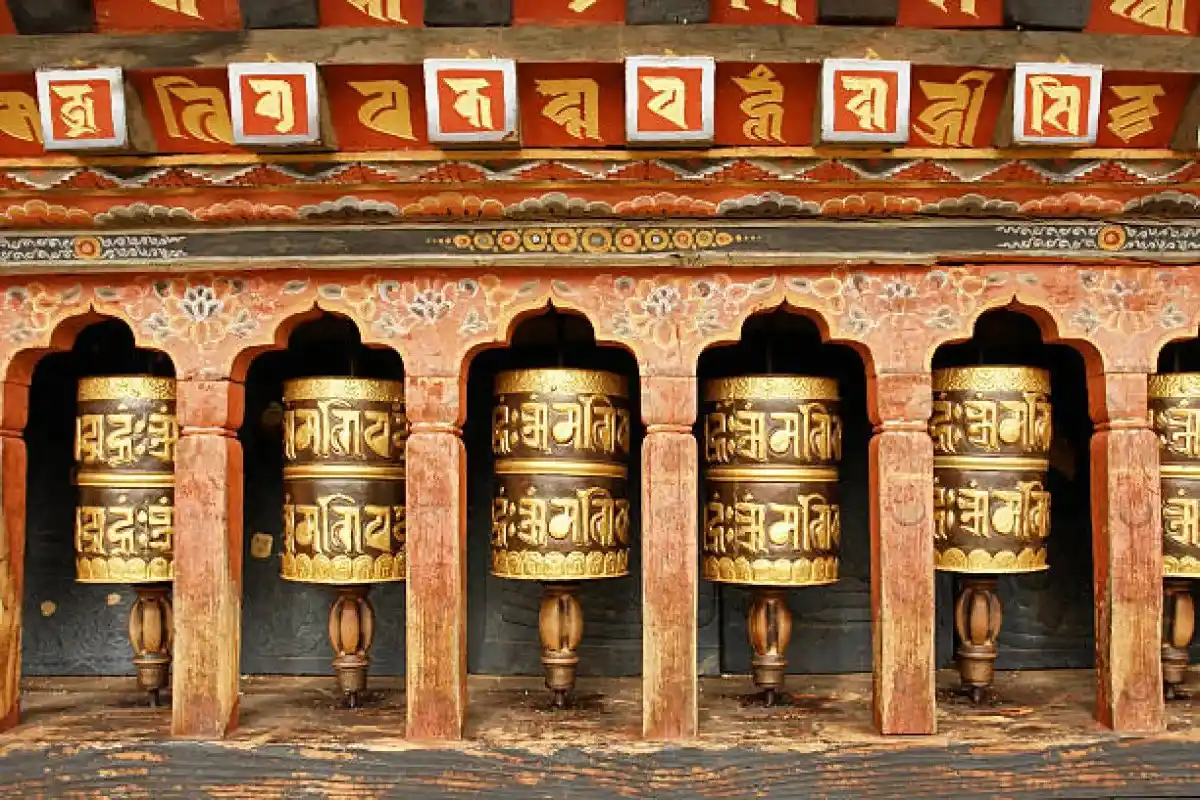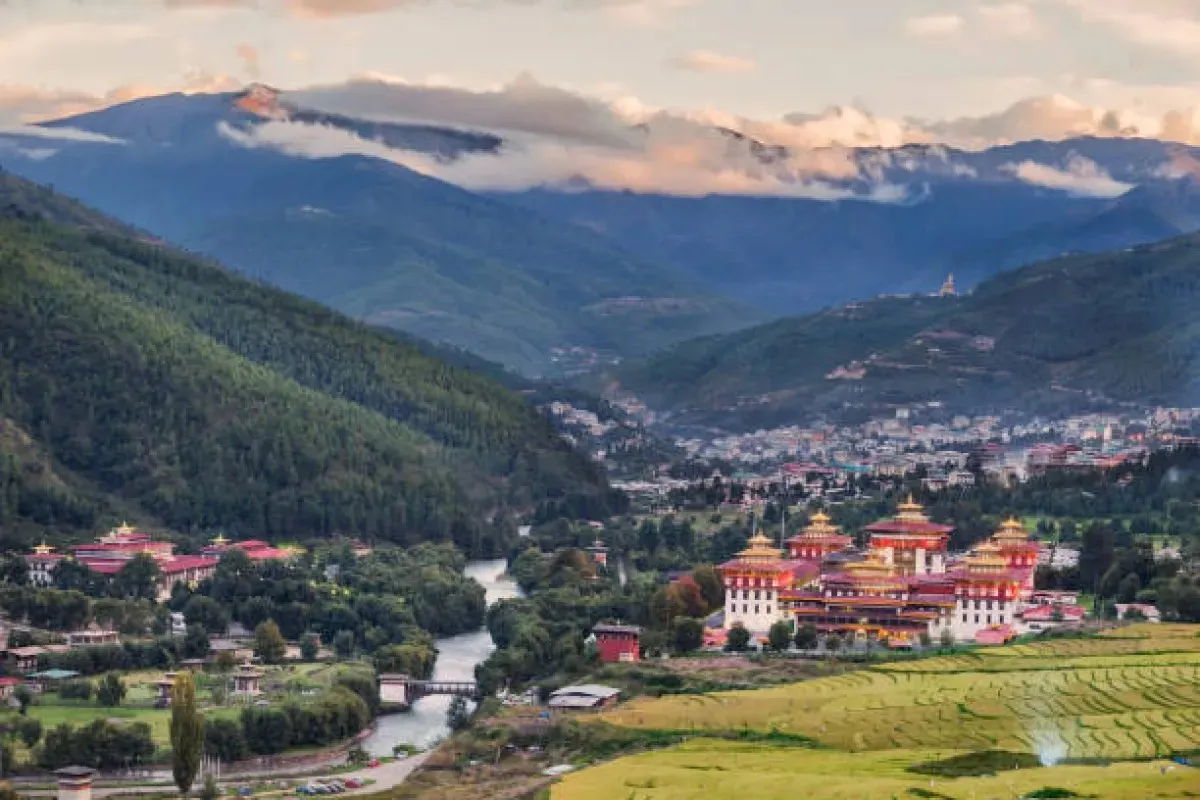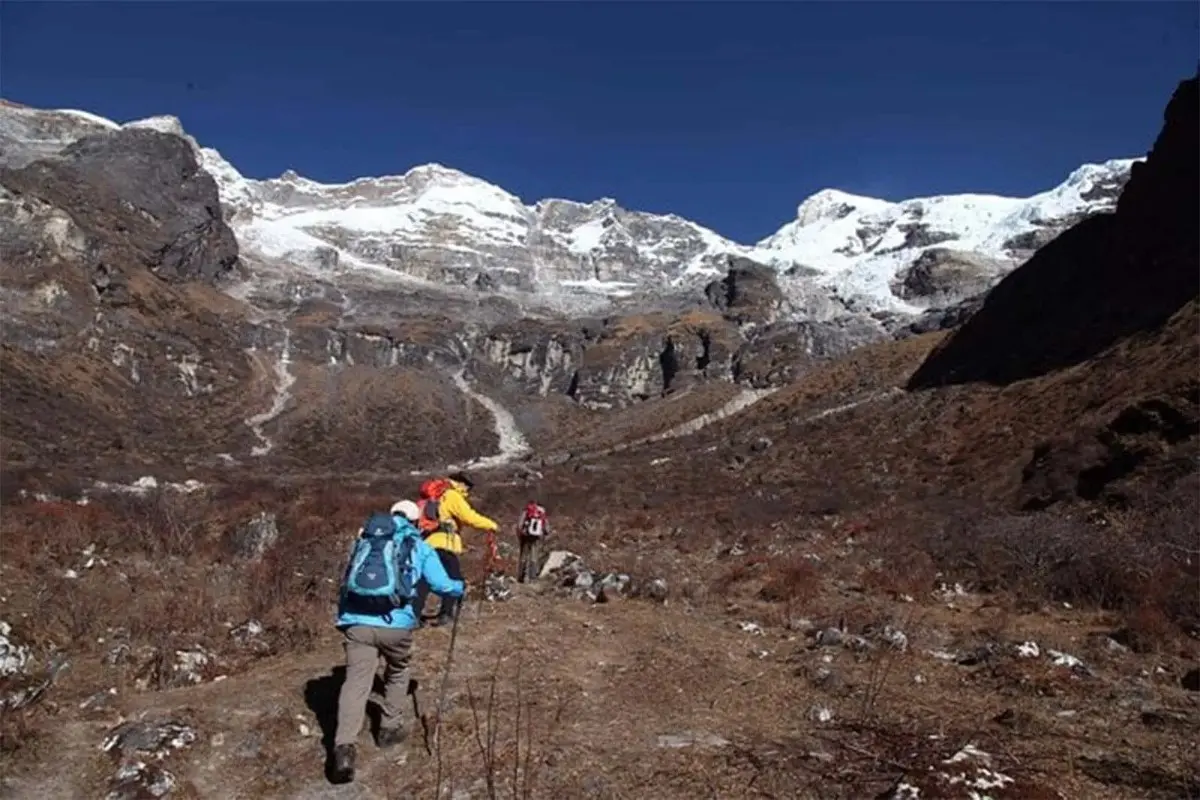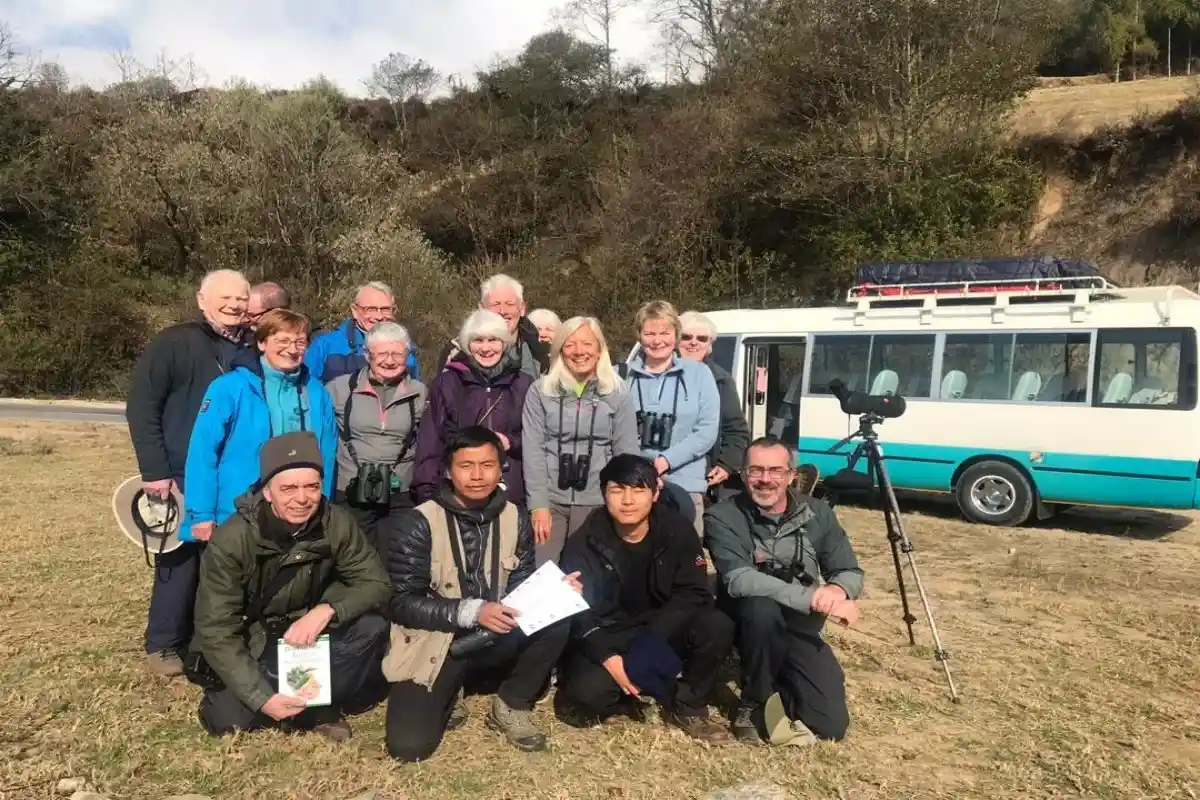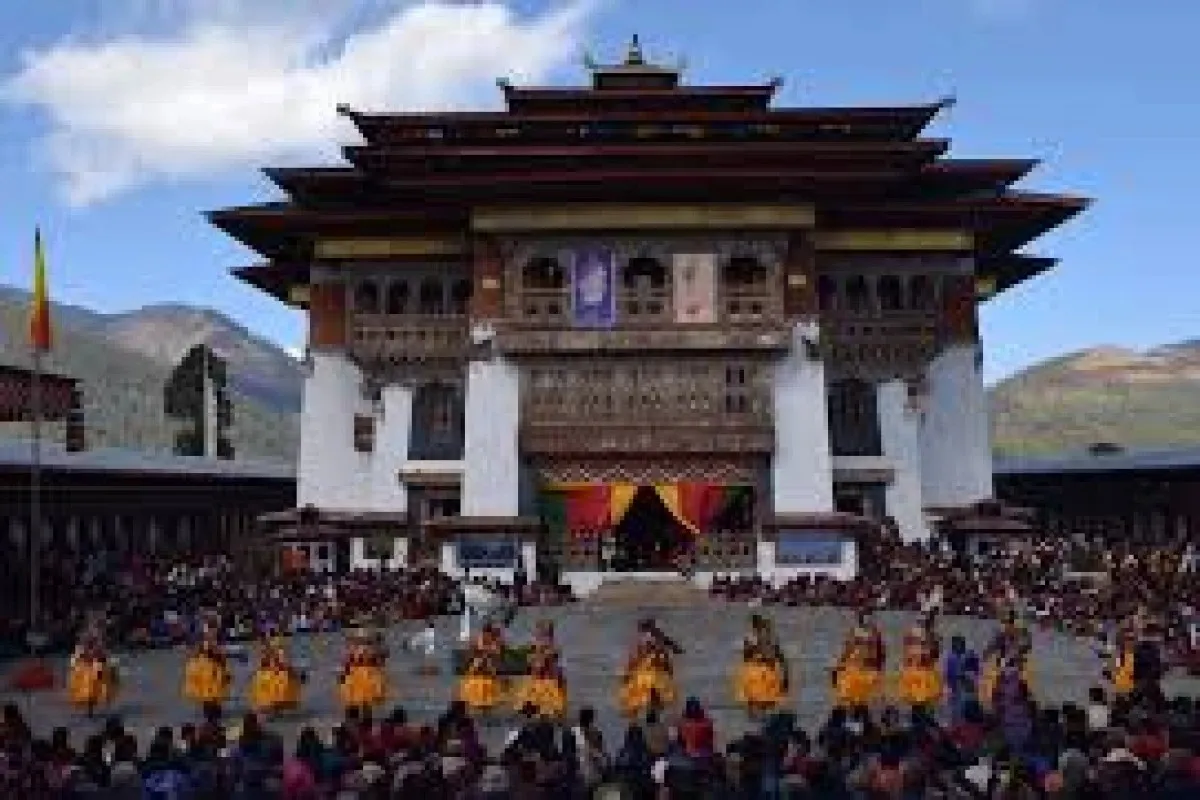Family Cultural and Adventure Tour in Gasa - 6 Days
At the core of the Eastern Himalayas, Bhutan lets families shut off their devices and enjoy each other’s company in one of the world’s quietest kingdoms. This tour allows families to enjoy both easy exploration in nature and traditional cultural experiences during their stay. This special itinerary takes care to show you and your family Bhutan’s wonderful nature and strong Buddhist culture.
Highlights
- Punakha Dzong and Gasa Dzong
- Village Walk in Gasa
- Nature Trek to Tashithang
- Sangchhen Dorji Lhakhang
- Pho River Boat Ride
- Thimphu Market Exploration
Trip Overview
The itinerary highlights how to travel sustainably while guests enjoy pleasant accommodations and a number of family-friendly activities that will be remembered for a long time.
You can take in the stunning scenery and old culture of Bhutan on the 6-day Gasa Family Cultural and Adventure Tour together with people close to you. Everyone on tour will enjoy a right balance of gentle experiences and cultural discovery that fits their preferences and skills. Visiting dzongs and sacred sites, traveling on quiet trails, and exploring forests with sustainable practices are highlights of this tour, all made possible by supporting the needs of local communities. By following the thoughtfully designed schedule, families are able to experience and bond with the people and their culture at each spot. Join in on this amazing family tour and learn why Bhutan regularly appears among the world’s most protected and appealing places for conscious tourists.
The itinerary highlights how to travel sustainably while guests enjoy pleasant accommodations and a number of family-friendly activities that will be remembered for a long time.
You can take in the stunning scenery and old culture of Bhutan on the 6-day Gasa Family Cultural and Adventure Tour together with people close to you. Everyone on tour will enjoy a right balance of gentle experiences and cultural discovery that fits their preferences and skills. Visiting dzongs and sacred sites, traveling on quiet trails, and exploring forests with sustainable practices are highlights of this tour, all made possible by supporting the needs of local communities. By following the thoughtfully designed schedule, families are able to experience and bond with the people and their culture at each spot. Join in on this amazing family tour and learn why Bhutan regularly appears among the world’s most protected and appealing places for conscious tourists.
Short Itinerary
Visit Punakha Dzong and enjoy a peaceful evening in a traditional village setting.
Explore Gasa Dzong, meet locals, try yak cheese, and see traditional weaving.
Hike through forests, spot wildlife, and enjoy stories around the fire.
Walk through alpine fields, spin prayer wheels, and learn about Buddhist values.
Visit the Fertility Temple and enjoy a gentle boat ride on the Pho River.
Tour Bhutan’s oldest fortress and shop for handmade local items in Thimphu.
Price Includes
- Pick-up and drop-off services
We provide a pick-up service from the airport to the hotel on your arrival day and from the hotel to the airport on the departure day.
- Lunch, Breakfast, and Dinner
All meals during the trek will be provided by the company. However, personal food items like coffee, tea, cold drinks, etc, are not included in the package.
- A guide proficient in English
A certified, English-speaking guide will accompany you throughout the trip. The guide will offer information about the trail, culture, nature, and history, and ensure your safety and a smooth experience.
- Comfortable SUV vehicle
A private SUV will be used for road travel before or after the trek. These vehicles are ideal for Bhutan’s hilly terrain and provide a comfortable ride.
- All types of entry costs
This covers all permit fees, monument entrance fees, park fees, and any other official charges required for trekking or sightseeing activities during the tour.
- Professional Drive
We ensure a safe and smooth drive during your tour. We have licensed and experienced drivers for that.
- Sleeping bag and tent
Quality sleeping bags and tents are provided for your comfort and warmth during the camping nights on the trek. So, you don’t have to worry about buying a new one.
- Farewell dinner
A special farewell meal, typically arranged in a traditional restaurant, is offered at the end of the tour to celebrate the journey and thank the participants.
- Evening Tea/coffee with snacks
Each evening, you’ll be served tea or coffee along with light snacks like biscuits and popcorn.
- Drinking Water
Safe and clean drinking water is provided throughout the trek.
- Pick-up and drop-off services
We provide a pick-up service from the airport to the hotel on your arrival day and from the hotel to the airport on the departure day.
- Lunch, Breakfast, and Dinner
All meals during the trek will be provided by the company. However, personal food items like coffee, tea, cold drinks, etc, are not included in the package.
- A guide proficient in English
A certified, English-speaking guide will accompany you throughout the trip. The guide will offer information about the trail, culture, nature, and history, and ensure your safety and a smooth experience.
- Comfortable SUV vehicle
A private SUV will be used for road travel before or after the trek. These vehicles are ideal for Bhutan’s hilly terrain and provide a comfortable ride.
- All types of entry costs
This covers all permit fees, monument entrance fees, park fees, and any other official charges required for trekking or sightseeing activities during the tour.
- Professional Drive
We ensure a safe and smooth drive during your tour. We have licensed and experienced drivers for that.
- Sleeping bag and tent
Quality sleeping bags and tents are provided for your comfort and warmth during the camping nights on the trek. So, you don’t have to worry about buying a new one.
- Farewell dinner
A special farewell meal, typically arranged in a traditional restaurant, is offered at the end of the tour to celebrate the journey and thank the participants.
- Evening Tea/coffee with snacks
Each evening, you’ll be served tea or coffee along with light snacks like biscuits and popcorn.
- Drinking Water
Safe and clean drinking water is provided throughout the trek.
Price Excludes
- International Airfare
- Visa Charges and Insurance
- Individual expenditures
- Additional-day lodging
- Laundry and telephone expenses
- Tips for the guide and the porter
- International Airfare
- Visa Charges and Insurance
- Individual expenditures
- Additional-day lodging
- Laundry and telephone expenses
- Tips for the guide and the porter
Family Cultural and Adventure Tour in Gasa Itinerary
When you get to Punakha Valley, you’ll be amazed by the historic Punakha Dzong, which begins your Bhutan adventure. The Palace of Great Happiness, known by this name, is located at the meeting place of the Pho and Mo rivers. People in families will be amazed by the skillful wood decorations, shining towers, and calm indoor spaces, while also finding out about Bhutan’s distinctive government. Children visiting the dzong can learn about Bhutanese traditions, because it works both as a government center and a monastery. After finishing the fortress tour, enjoy a comfortable family stay amid the valley’s rice weave and the nearby traditional house village. You have a peaceful evening to relax while tasting Bhutanese specialties, made with healthy and local ingredients.
Make your way to the Gasa region and you will see the impressive old Gasa Dzong built on the top of a hill, watching over the valley below. Families can enjoy impressive views of both Himalayan peaks and mountain valleys at this fort from the early 17th century. Kids will be fascinated by the information on ancient wars and royal rituals found throughout the dzong’s chambers and temples. When the visit to the fortress is done, try a leisurely walk through Gasa village, where you’ll see classic farmhouses and receive smiles from the villagers. A visit allows families to observe both herding and weaving, and children learn the importance of farming sustainably. While in the village, visitors may sample yak cheese, encounter village animals, and buy something handmade directly from those who made them, adding value to the community’s economy.
Your family trek should start at Gasa and head for Tashithang, where you can walk on maintained trails while exploring pristine rhododendron forests and the streams beside you. All walkers can enjoy this special route, which highlights the rich nature of Bhutan. Hiking, families may see the hanging multicolored prayer flags, visit important spots with stone chortens, and encounter the exotic blue sheep or takin. Stops are made along the way at special places for children to take part in finding items and for adults to find out about traditional Bhutanese herbal medicine. Tour leaders explain local myths and describe how people care for the environment while providing for your safety and comfort. Once the day is done, families stay in Tashithang by the fire, sharing their experiences from the night sky.
Move on to enjoy another hike at Sangchhen Dorji Lhakhang temple, which you will find at a grand height of 3,000 meters. Along the route are alpine fields full of flowers and panoramic views of several tall peaks, with Gangkar Puensum being the highest in Bhutan. Fun outdoor games teach children about both the nature found in high-altitude areas and Buddhist ideas. Visitors to the temple can meditate and think deeply, as monks meet them and help explain Buddhist beliefs in a child-friendly way. Families are welcome to join in ancient butter lamp lighting and spin prayer wheels while they learn valuable lessons in compassion and mindfulness. While the place is peaceful for grown-ups, kids having fun will make the parents forget their travel worries. A lunch is offered at midafternoon, cooked by village cooks from vegetables cultivated in the temple’s garden.
Make sure you stop at the Chimi Lhakhang or the Fertility Temple and find out about the traditions and fun tales of Drukpa Kunley. Visitors of any age are fascinated by the colorful pictures and learn about Bhutanese humor and religion from everything found at this place. Kids like walking along the rice fields to get to the temple, because they usually see herons and other birds along the way. After the temple visit, consider a gentle river trip on the Pho River in Punakha that is great for spending time with your family. The river journey features terraced farms, quaint traditional villages, and lovely riverbanks for visitors, offering a great time for both wildlife photography and quality family moments. He says that over the years, there have been changes in fishing and tells about a few local plants and some rock formations. River rides alongside walking in the mountains provide a good contrast and keep the trip full of learning.
Finish your family trip by visiting Simtokha Dzong, which is both ancient and very significant. He says that over the years, there have been changes in fishing and tells about a few local plants and some rock formations. Visitors explore how the fortress looks while they learn how Bhutan maintains its educational traditions and passes on age-old information. The dzong museum shows rare artifacts, lovely costumes, and interesting religious work for everyone to see. After the dzong, travel to Thimphu and participate in the weekend market to shop for original handicrafts, colorful traditional clothes, and yummy local snacks. Negotiating souvenirs brings joy to children, and parents get to replace their regular spices with organic varieties, delicious fabrics, and unusual jewelry. Buying souvenirs at markets is fun and helps encourage your local community.
Know Before You Travel
-
Punakha Dzong and Gasa Dzong:
You will find two breathtaking fortresses in Bhutan during your holidays. Two rivers come together at the location of Punakha Dzong, where you can admire classic Bhutanese architecture. On a hilltop, the famous Gasa Dzong gives you an impressive view of the Himalayan mountains and also reveals Bhutan’s strategic defense history.
-
Village Walk in Gasa:
You can get a glimpse of real Bhutanese village life by walking through Gasa. You can meet with families in the countryside, watch farming, and see the friendship and kindness the country is known for. Being around village animals and observing how sustainable practices have remained in this region will keep kids entertained.
-
Nature Trek to Tashithang:
Take a family hike through clean forests and near lovely mountain streams. Because the trek to Tashithang is suitable for anyone, families can experience the amazing nature of Bhutan and take in fresh mountain air. It’s easy to spot wild animals, so young explorers can learn a lot during their visit.
-
Sangchhen Dorji Lhakhang:
Get to the sacred Sangchhen Dorji Lhakhang at 3,000 meters, so families can worship in Buddhist ceremonies and admire the region’s grand mountain panorama. The atmosphere within the temple is perfect for meditation, and children have fun enjoying nature games nearby.
-
Pho River Boat Ride:
Get to the 3,000-meter summit so those visiting can worship in Buddhist ceremonies and see the impressive views of the area. Temple visitors can meditate calmly while letting their kids joyfully play nearby.
-
Thimphu Market Exploration:
Finish your trip by experiencing Thimphu’s weekend markets, letting you enjoy true Bhutanese crafts, indulge in delicious local snacks, and appreciate the hustle and spirit of the city.
-
Thanks to this tour:
Thanks to this tour, travelers can experience the Gasa culture, enjoy mild adventures, and see beautiful nature—all of which delights every age group. Instead of just sightseeing, guests in Bhutan learn about protecting nature, meditation helps parents relax, and grandparents enjoy the country's cultural traditions. Because the pace of the tour is comfortable, everybody can appreciate every activity. Spending time each day through family activities makes your family closer and gives you things to remember.
family-cultural-and-adventure-tour-in-gasa
Download
Family Cultural and Adventure Tour in Gasa
FAQs for Family Cultural and Adventure Tour in Gasa
These months are the best times to visit Gasa as a family since the weather makes being outdoors more comfortable. Spring gives us mild temperatures, nice flowers, and clear views, while autumn provides colder air, easier viewing, and comfortable hiking. From June to August, the monsoon makes trails slick and mountain views harder to enjoy, but greenery is abundant everywhere. You’ll find higher elevations chilly during winter (December-February), but the lower valleys provide an enjoyable environment for cultural activities.
This vacation itinerary has been created to please families that have members with different fitness levels. Trips feature a range of options for those who can’t complete long walks on certain days, and distances are not overwhelming each day. The trip is tailored to fit everyone’s skills, ensuring shorter options and permanent chances for rest. An experienced guide is able to handle the situations of different groups and control how quickly they move. Most places to stay provide age-friendly amenities for older guests and families with small children.
Essential for your trip are hiking boots, extra clothes for any temperature change, rain gear, sun protection, and medicines. Children need to bring enjoyable snacks, something to entertain themselves during the trip, and good walking shoes. It is wise for travelers to wear only what’s important and a winter coat if they are trekking, and to dress modestly for all temple visits. As soon as you book, you will receive a useful checklist for what to bring, together with ideas for souvenirs and presents to support the local people.
Normally, gasa altitude remains at 3,000 meters, and most healthy folks manage it well when they are properly acclimatized. Excursions are organized so you can gradually get accustomed to the altitude and all guides have expertise in altitude sickness. If anyone in the family has a heart or breathing problem, mention it to the medical staff before your trip. Whenever someone climbs with us, they are required to buy travel insurance. Being well-hydrated and not drinking alcohol from sea level up lowers the risk of altitude sickness.
We organize this tour as per Bhutan’s “High Value, Low Impact” policy by enlisting expert guides, staying in community-based hotels and buying locally produced goods and crops.Activities during the program involve environmental education and site visits to conservation work. By routing trips logically and using carpools, transportation reduces negative impact on the environment. Guests are informed about Bhutan being carbon negative and can volunteer for landscape gardening or monastery projects. Employment, buying handicrafts, and participating in cultural exchange are all ways the tour supports local communities.
At dzongs and temples, it is important to take off your shoes and your hat, avoid aiming your feet toward holly objects and keep talking softly. The rules for shooting in different spots are specific and are shared by the experts. Greeting visitors and saying the basics of Dzongkha is part of the program. Visitors should wear appropriate clothing at religious places, and families are expected to behave with respect at cultural ceremonies. While kids are accepted warmly, their parents ought to teach them to respect their elders.
The simplicity of Bhutanese food means there are many choices for both vegetarians and those sensitive to gluten. Operators regularly coordinate their menus with restaurants and hotels to ensure special diets are taken care of for people on different diets. You can usually find Western food wherever you go, so there’s something for people who prefer it. When we are alerted about dietary requirements ahead of time, we are able to plan and fix meals in case staff members cannot eat what is planned.
The national language is Dzongkha, but many Bhutanese also speak English.
Yes, all licensed guides are fluent in English and sometimes other languages as well.
Most signs and maps intended for tourists are written in English.
It's not necessary, but learning a few basic phrases is appreciated by locals.
: Your guide will handle communication, so language barriers are minimal.
The national language is Dzongkha, but many Bhutanese also speak English. If you speak English and are worried about communicating with the local people, you will have your guide as a translator.
Yes, all licensed tour guides in Bhutan are required to speak fluent English. Many are also trained in other languages such as German, Japanese, or French. Communication during the trip will be smooth and clear in English.
Most signboards, tourist maps, and information brochures are written in English, especially in tourist destinations like Paro, Thimphu, and trailheads. Directional signs along routes are often labeled in both Dzongkha and English.
No, learning Dzongkha is not at all needed for the trip, but knowing a few basic words like "Kuzu zangpo la" (Hello) or "Kadrinche la" (Thank you) is a good way to interact with the locals.
Language barriers are minimal, as your guide will handle all communication with locals and support staff. Your guide will translate for you during your interaction with the locals.
You need a visa and all necessary permits for your trip. These documents can not be received on the day of your arrival, so they must be processed before coming here. After you book a trip with us, we will manage these papers for you. Your Bhutan visa is arranged by Orrog as part of the package.
The main way to come to Bhutan is through Paro International Airport, which is well-connected to cities like Bangkok, Delhi, Kathmandu, and Singapore. Most people arrive by air, but if you plan to come via road, you can enter through Phuentsholing, located on the southern border with India, which is the most commonly used entry point.
It is recommended to apply for the visa at least 20 days before your planned departure date so that there is enough time for processing your Bhutan visa, finalizing your itinerary, and arranging your guides and transportation. Although visa processing itself is relatively fast once payment is received, early preparation helps avoid delays and ensures availability, especially during peak seasons (spring and autumn).
You don’t require a passport-size photo for the visa, but it is wise to carry at least 2–4 recent passport-sized photographs during your trip. These may be needed for local permits, registration, or when applying for a local SIM card upon arrival in Bhutan.
Yes, you can lengthen your stay in Bhutan either before or after your trip. Bhutan’s tourism model requires visitors to pay a Sustainable Development Fee (SDF) and a daily package cost, so any extra days will involve additional charges. Extensions are a great opportunity to explore cultural sites in Paro, Thimphu, or even add another short trip or day hike.
Yes, Bhutan requires full tour payment in advance before your visa can be processed and issued. The government of Bhutan regulates this policy to ensure that all travel arrangements are confirmed through a licensed Bhutanese tour operator. We are a licensed tour operator that ensures you have everything you need for a trouble-free trip.
Any personal expenses are not covered in the package like:
- Tips for your guide and other staff
- Bottled drinks and snacks(personal expense)
- Souvenirs or local crafts
Credit cards are easily accepted in major cities like Paro and Thimphu. But in remote areas, you may not have access to a card or an ATM. So, it is best to carry some cash before heading for the trip.
Tipping is not mandatory, but it is a widely appreciated gesture and a customary way to show gratitude for good service. The tipping guideline would be to give USD 5-10 per day as a tip for the guides and other staff.
Paro International Airport is the only international airport in Bhutan. It is well connected by flights from cities like Bangkok, Delhi, Kathmandu, and Singapore.
Yes, airport pick-up and drop-off are included in the package. We will have your guide and driver meet you at the airport and transport you to your hotel.
While Bhutan's roads are mostly paved, some parts are narrow, winding, and occasionally affected by weather. However, we ensure your travel is safe, well-maintained, and driven by an experienced professional throughout the journey.
Yes, it is very safe to travel even with children in Bhutan. Roads are well-maintained, and the pace of travel is generally relaxed and child-friendly.
We will usually travel in comfortable, private vehicles with experienced drivers. All ground transportation is included in your package.
The Bhutanese Ngultrum is used in Bhutan. All local transactions during the trip will be in BTN.
US Dollars (USD) are generally accepted at larger hotels, souvenir shops, and tour operators, particularly in Paro and Thimphu. However, it’s advisable to convert your currency to BTN for general purchases in rural areas. Other currencies like the Euro or the Pound are not commonly accepted directly.
No, credit or debit cards are not accepted on the trip, as it takes you through remote regions with no banking or electronic payment access. All trip-related payments like accommodation, meals, permits, etc, are paid in advance.
You can exchange foreign currency at the Paro International Airport, at banks, or through licensed money changers in cities like Thimphu and Paro. It's best to exchange enough cash before heading out on the trip.
To greet people, you can greet with locals “Kuzu zangpo la” (Hello) by performing a slight bow. Most common greetings include physical greetings, such as shaking hands less visible, especially in rural areas.
Yes, but remember to seek permission, especially when taking photos of monks, locals, or temples. Please note that clicking photos is not allowed at most religious sites.
Visitors should dress modestly and respectfully. This means:
- Covering shoulders and knees
- Removing hats and sunglasses
- Not wearing shorts or sleeveless tops
This applies to both men and women.
Yes, Bhutanese society is deeply rooted in Buddhism and tradition. Here are some key taboos:
- Do not point your feet at people or sacred objects
- Never touch anyone on the head, as it is considered sacred
- Walk clockwise around temples, stupas, and religious monuments
- Avoid public displays of affection
While gifts are not expected, they may be accepted graciously if given with respect. It is advisable to consult with the guide before giving out anything.
Bhutan typically uses Type C, Type D, and Type G electrical outlets. Standard safe voltage is 230V and frequency is 50Hz; therefore, ensure that your equipment is compatible with this voltage.
Indeed, it is highly advised to take along a universal travel adapter, particularly one to fit a variety of types of plugs, because plugs can be different in a hotel or a guesthouse.
Bhutan follows Bhutan Time (BTT), which is UTC/GMT +6 hours. This time zone remains consistent throughout the year.
No, Bhutan does not observe daylight saving time. The country maintains the same time year-round.
Bhutan is 30 minutes ahead of India. For example, 12:00 PM in India is 12:30 PM in Bhutan.
Yes, souvenirs can be bought in Paro or Thimphu before or after the trip.
Some popular souvenirs include hand-woven textiles (kira and gho fabric), prayer flags, thangka (religious scroll) paintings, handmade paper products, traditional masks, and Buddhist artifacts.
You can do some gentle bargaining in local street markets. However, in government-run shops and fixed-price stores, prices are usually non-negotiable.
Yes, you can easily purchase a SIM card upon arrival in Bhutan. We will assist you with the process, and you'll need a passport copy and a passport-sized photo.
No, internet access is not available during the trip. However, Wi-Fi is available in hotels in Paro and Thimphu before and after the trip.
Since the weather can be unpredictable and temperatures can vary drastically, layered clothing is essential. You should pack:
- Base layers (thermal tops and bottoms)
- Insulating layers like fleece or down jackets
- Waterproof and windproof outer layers
- Warm hats, gloves, and neck gaiters for freezing conditions
- Moisture-wicking socks and weatherproof trekking boots
Nighttime temperatures can be extremely cold, especially at high-altitude places. So you need to have enough clothing to keep you warm.
The weather is clear with mild daytime temperatures during spring and autumn.
Yes, all tours include certified, English-speaking guides who are knowledgeable in Bhutanese history and culture.
You can learn about the Bhutanese culture through local interactions, homestay visits, cooking classes, traditional art workshops, and attending local festivals and religious ceremonies.
Reviews & Ratings
-
Guarantee -
Thimphu,Bhutan -
975+17160228
Ready to Explore Bhutan?
Start your journey today and discover the magic of Bhutan with our expert guides and carefully crafted tours.
Book This Trip
-
No booking or credit card fees -
Best price guarantee -
Full customize trip
Ask a Question
Feel free to ask us anything about this tour. A travel expert will then get back to you as soon as possible
Ready to Explore Bhutan?
Start your journey today and discover the magic of Bhutan with our expert guides and carefully crafted tours.

